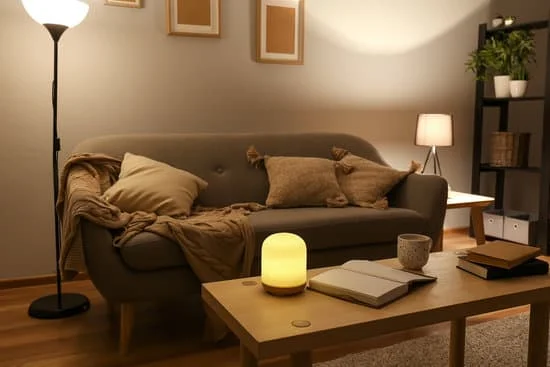How culture affects home decor is an intriguing topic that delves into the diverse influences shaping our living spaces. From traditional elements to color palettes, textiles, and symbolism, this article will explore the impact of different cultures on home design. The way we decorate our homes reflects our heritage, experiences, and beliefs, making it a fascinating journey into understanding the importance of cultural influences in creating a unique living space.
Culture plays a significant role in shaping home decor choices, as it reflects a sense of identity and belonging. Different cultures bring their own distinctive styles and design elements that have been passed down through generations, influencing modern home decor trends. By understanding how culture affects home decor, we gain insight into the richness and diversity that can be incorporated into our own living spaces.
The traditional decor of various cultures provides a wealth of inspiration for those seeking to infuse their homes with meaningful design elements. Exploring these traditional design features from around the world adds depth and character to modern interior design. From color palettes and textiles to symbolic meanings in different cultures, there are endless possibilities for incorporating cultural influences into home decor to create a truly personalized and authentic living environment.
Traditional Decor in Different Cultures
When it comes to home decor, traditional elements from different cultures can add a unique and authentic touch to any space. From the intricate patterns of Moroccan design to the minimalist aesthetic of Japanese interiors, traditional decor reflects the rich history and artistic heritage of each culture.
For example, in African cultures, vibrant colors, geometric patterns, and natural materials such as wood and clay are commonly used in traditional home decor. In contrast, Scandinavian design features clean lines, light tones, and functional furniture that focus on simplicity and functionality.
Incorporating traditional elements into modern home decor has become increasingly popular as people seek to create a more diverse and globally-inspired living space. By blending traditional pieces with contemporary furnishings or incorporating cultural textiles and accessories into your home, you can create an eclectic and visually stimulating environment. Embracing these traditional decor elements also allows homeowners to celebrate their heritage or connect with a culture that resonates with them personally.
One example of how traditional decor from different cultures is being embraced today is through the use of handmade crafts and artisanal goods. Artisans from various parts of the world produce items such as pottery, textiles, baskets, and carvings that showcase traditional techniques and designs.
These unique pieces not only add character to a space but also provide a meaningful connection to different cultures. Ultimately, embracing traditional decor from different cultures can help create a home that reflects a global perspective while honoring the craftsmanship and distinct beauty of each tradition.
| Traditional Decor Elements | Cultural Influence |
|---|---|
| Moroccan Patterns & Textiles | Intricate designs influenced by Arabic culture |
| Scandinavian Furniture | Simple yet elegant designs reflecting Nordic lifestyle |
| African Colors & Materials | Vibrant hues and natural elements showcasing African heritage |
Color Palettes in Different Cultures
When it comes to home decor, the use of color plays a significant role in reflecting cultural influences. Different cultures around the world have their own unique approach to incorporating color into their living spaces, often with deep symbolic and emotional significance.
How Different Cultures Use Color
In some cultures, specific colors hold great importance and are believed to bring about certain energies or emotions. For example, in Chinese culture, red is considered lucky and symbolizes joy and good fortune, which is why it is commonly used in celebrations and home decor. On the other hand, Scandinavian design often incorporates neutral tones such as whites, beiges, and grays to create a sense of simplicity and tranquility.
The Emotional and Symbolic Significance of Colors
It’s fascinating to explore how colors are perceived differently across various cultures. For instance, in many African cultures, the color green symbolizes fertility and growth, while in Indian culture, yellow represents happiness and prosperity. Understanding the emotional and symbolic significance of colors in different cultures can lead to a deeper appreciation for the stories behind them.
Incorporating Cultural Color Palettes Into Your Home Decor
Incorporating cultural color palettes into your own home decor can be a meaningful way to celebrate your heritage or simply infuse your space with diverse influences. Whether it’s through bold accent walls, vibrant textiles, or decorative accessories, there are countless ways to introduce cultural color palettes into your home while honoring their inherent meanings.
By doing so, you not only add visual interest to your space but also create a more personal and culturally rich environment that resonates with you.
Cultural Textiles and Patterns
The use of textiles and patterns in home decor varies greatly across different cultures, with each culture having its own distinctive style and symbolism. For example, in Indian culture, intricate and colorful textiles such as saris and tapestries play a significant role in home decor.
These textiles often feature elaborate patterns and bold colors that can add a vibrant and lively touch to any space. Similarly, in African cultures, traditional textiles like kente cloth from Ghana or mud cloth from Mali are highly valued for their unique geometric patterns and earthy tones.
Incorporating cultural textiles and patterns into your own home decor can be a wonderful way to pay homage to your heritage or simply appreciate the artistry of different cultures. Whether it’s through the use of throw pillows, rugs, curtains, or wall hangings, these elements can infuse a sense of warmth and character into any room.
For those who may not have direct ties to a specific culture but still appreciate the beauty of global design, incorporating diverse textiles and patterns can create an eclectic and visually stimulating home environment.
It’s important to approach the incorporation of cultural textiles and patterns with sensitivity and respect for their origins. Learning about the cultural significance behind these fabrics and designs can deepen your appreciation for them while also ensuring that you are honoring their heritage appropriately. By doing so, you not only enrich your living space but also embrace diversity and promote cultural awareness in your personal surroundings.
| Cultural Textiles | Patterns |
|---|---|
| Saris (India) | Elaborate |
| Kente Cloth (Ghana) | Geometric |
| Mud Cloth (Mali) | Earthy Tones |
Symbolism and Meaning
Home decor is not just about creating a visually pleasing space, but it also serves as a way to express one’s culture and heritage. Different cultures have their own unique symbols and meanings that are incorporated into the design of their homes. Understanding the symbolic significance behind certain decor elements can add depth and richness to your living space.
In many cultures, specific colors, patterns, and objects hold deep symbolic meanings. For example, in some Asian cultures, the color red symbolizes luck and prosperity, which is why it is used prominently in wedding decorations. Understanding these cultural significances can help you make more intentional design choices for your home.
When incorporating meaningful decor items that represent your own culture, it’s important to understand the context and significance behind them. Whether it’s displaying traditional crafts or using textiles with symbolic patterns, it’s important to do so with respect and understanding of their cultural relevance. By doing so, you not only create a more meaningful space for yourself but also showcase and celebrate your heritage.
Feng Shui and Cultural Influences
When it comes to home decor, cultural influences play a significant role in creating a space that feels personal and meaningful. One such influence is Feng Shui, an ancient Chinese practice that focuses on the flow of energy in a space to promote harmony and balance. In addition to Feng Shui, various cultural beliefs and traditions also impact home decor choices, whether it’s the use of color, textiles, or symbolic elements.
Incorporating Feng Shui principles into your home decor can bring a sense of balance and tranquility to your space. Whether it’s arranging furniture according to Feng Shui guidelines or incorporating specific elements like water features or plants, there are many ways to bring this cultural influence into your home. Likewise, other cultural beliefs such as Indian Vastu Shastra or Japanese Zen principles can also offer valuable insights into creating a harmonious living environment.
To incorporate Feng Shui and other cultural influences into your own space, consider the following tips:
- Research the basic principles of Feng Shui or other relevant cultural design philosophies
- Create a floor plan that allows for optimal flow of energy
- Integrate natural elements such as wood, water, fire, earth, and metal into your decor
- Choose decor items with symbolic meaning that resonate with you and your desired ambiance
- Consider consulting with a professional for personalized advice on incorporating cultural influences into your home
By understanding and embracing the rich cultural influences on home decor, you can create a space that not only reflects your personal style but also pays homage to traditions and beliefs that hold significance for you. Whether it’s through subtle nods to Feng Shui principles or bold displays of traditional textiles and patterns, the incorporation of cultural influences adds depth and meaning to any home design.
Cultural Decor DIY
If you’re looking to infuse your home decor with cultural elements, but don’t want to break the bank, consider trying some DIY projects inspired by different cultures. Not only can these projects add a unique and personal touch to your space, but they can also be a fun and creative way to celebrate and honor different cultures.
Here are a few easy DIY ideas for incorporating cultural decor into your home on a budget:
- Make Your Own Morrocan-Inspired Lanterns: Create beautiful Moroccan lanterns using mason jars and colorful glass paint. These lanterns can add a warm and exotic ambiance to any room, and they’re simple and inexpensive to make.
- Hand-Painted Ceramic Tiles: Embrace the vibrant colors and intricate patterns of traditional Portuguese tiles by painting your own ceramic tiles. You can use these painted tiles as coasters, wall art, or even tile a small tabletop for a unique cultural touch.
- Fabric Wall Hangings: Explore the rich textile traditions of various cultures by creating your own fabric wall hangings. Choose fabrics with bold patterns and vibrant colors that speak to your heritage or that simply resonate with you. This project allows you to express your creativity while adding an eclectic and global vibe to your home decor.
These DIY projects are just the beginning when it comes to incorporating cultural decor into your home on a budget. Get creative and think outside the box to find even more ways to celebrate diverse cultures in your living space. By infusing elements from different traditions into your home, you can create a unique, meaningful, and culturally rich environment that reflects who you are.
Global Fusion Decor
Embracing Diversity
The concept of global fusion decor encourages individuals to embrace diversity and appreciate the beauty of different cultural traditions. By incorporating elements from various cultures, such as African textiles, Asian patterns, or South American decorative pieces, one can create a rich tapestry of design that reflects the interconnectedness of the world. Embracing diversity through global fusion decor also allows for a more inclusive and open-minded approach to home design.
Creating Harmony
Achieving a harmonious global fusion decor requires thoughtful curation and an understanding of how different design elements can complement each other. It’s important to strike a balance between different cultural influences so that they work together cohesively in the overall design scheme. This may involve selecting key pieces from different cultures that have common aesthetic qualities or blending colors and patterns in a way that creates visual harmony.
Personalization and Storytelling
Global fusion decor provides an opportunity for personalization and storytelling within the home. Each piece incorporated into the design can tell a story about its cultural origin or significance, adding depth and meaning to the overall decor. Whether it’s through handmade crafts from specific regions, heirloom items passed down through generations, or souvenirs collected during travels, global fusion decor allows individuals to weave their own narratives into their living spaces.
Conclusion
In conclusion, culture plays a significant role in home decor and design choices. Throughout history, different cultures have developed unique traditions, styles, and aesthetics that have influenced the way we decorate our living spaces. Traditional decor elements, color palettes, textiles, patterns, symbolism, and beliefs all contribute to the diverse and rich tapestry of cultural influences in home decor.
It is important for individuals to acknowledge and celebrate their own cultural heritage when it comes to decorating their homes. By incorporating traditional design elements, colors, patterns, and meaningful decor items from their own culture, individuals can create a space that reflects their identity and roots. Embracing one’s cultural background adds depth and personal meaning to home decor.
Furthermore, the concept of global fusion decor allows for a harmonious blend of elements from various cultures. It encourages an appreciation for diversity while creating a balanced and cohesive look.
By exploring different cultural influences in home decor, individuals can gain a deeper understanding of the world around them and create a space that is not only aesthetically pleasing but also meaningful and reflective of their own unique cultural identity. Therefore, there is value in embracing cultural diversity through home decor as it enriches both the individual’s living environment and the collective tapestry of global design.

I’m thrilled to be your companion on this exciting journey through the world of home decor and design. With a passion for turning houses into homes and a keen eye for the finer details, I’m here to help you transform your living spaces into beautiful, functional, and meaningful havens.





